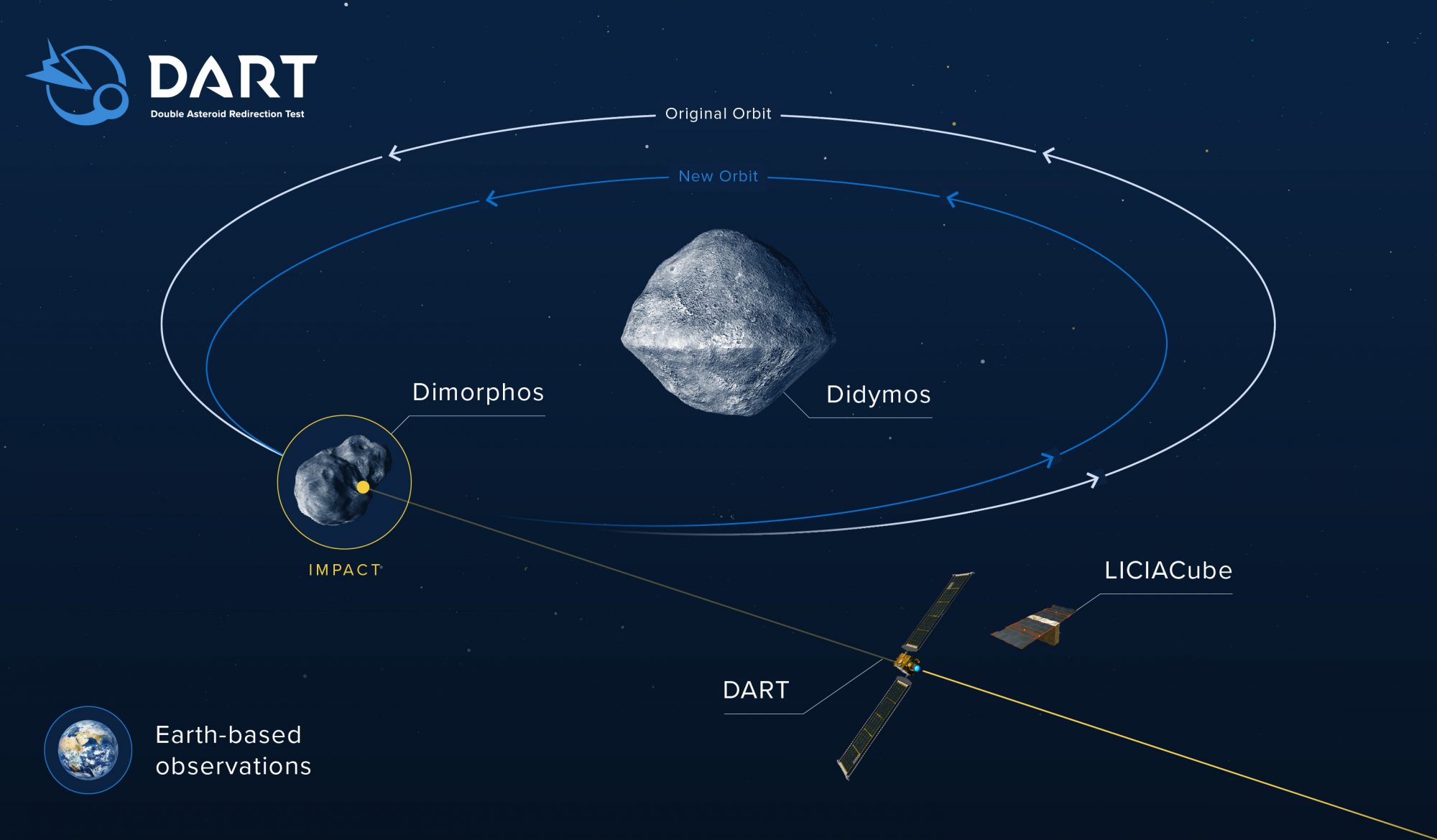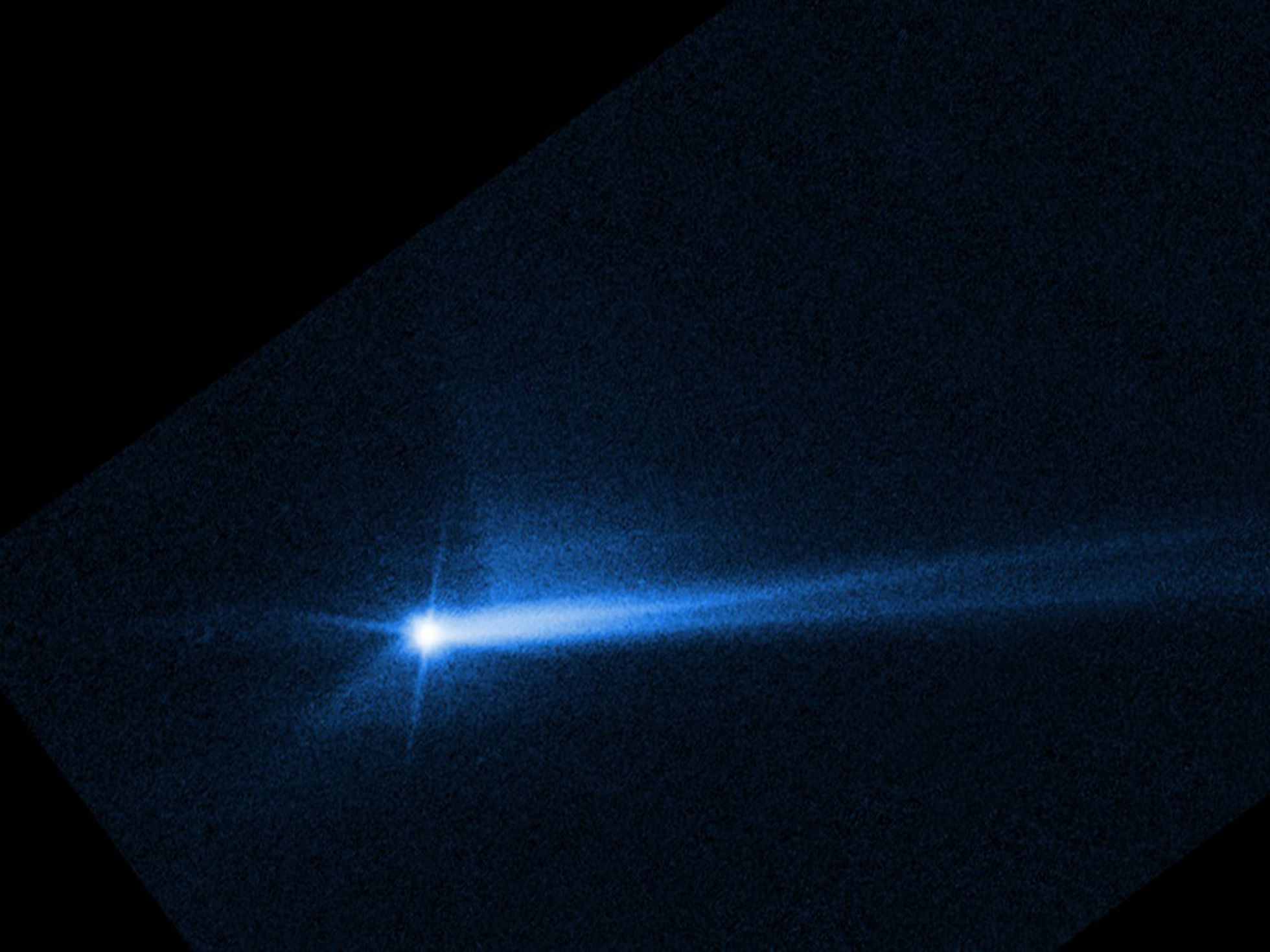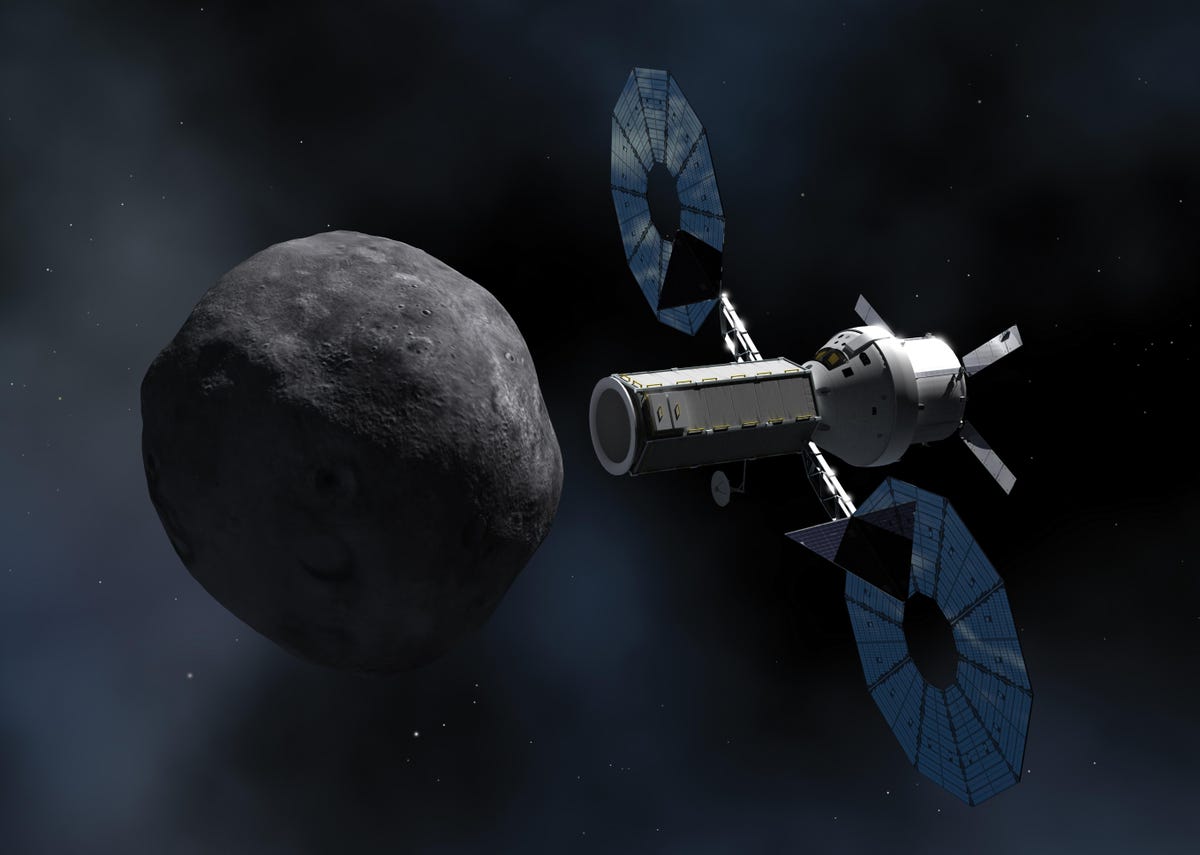You may recall back last September when NASA’s DART spacecraft slammed into an asteroid as a first test of a planetary defense system, see my post of 8 October 2022. The DART mission, which stands for Double Asteroid Redirection Test, was designed to see if it was possible to alter the trajectory of an asteroid that was on a collision course with Earth as a way of preventing that impact.

The target for the DART spacecraft was the asteroid Dimorphos, a 160m wide space rock that orbits around a larger, 750m asteroid named Didymos. By slamming into Dimorphos at 6km per second it was hoped that the 600kg DART spacecraft would change the time it takes the smaller asteroid to orbit around the bigger one. In astronomy it’s just easier to measure the time it takes something to happen rather than positions or distances.

Dimorphos’ orbital period around Didymos before the collision with DART had been measured at approximately 11 hours and 55 minutes. After the collision astronomers back here on Earth took their time to accurately measure the new period. Once the new orbital period had been determined the laws of orbital dynamics could be used to calculate how much the asteroid’s velocity had been changed.

It wouldn’t have to be by much either for the test to be successful because if you can change an asteroid’s trajectory by only one meter per second a year before it hits the Earth then that asteroid would miss our planet by more than 25,000 km. That’s why NASA’s plan for protecting Earth is to locate any potentially dangerous asteroids and if any are headed our way to gently alter their trajectory years before they get here. That’s considered to be a safer and less costly way to protect the Earth than Hollywood’s usual technique of blowing them up with nuclear weapons.

So the DART spacecraft slammed into Dimorphos and the collision was so brilliant that several telescopes back here on Earth were able to photograph it. Not only was the impact itself impressive but the force of the collision ejected a large amount of material from the surface of Dimorphos generating a tail behind the asteroid similar in appearance to a comet’s. Since then astronomers have been observing Dimorphos in order to learn just how successful the DART mission was.

Now the results are in and it is clear that DART did better than anyone had expected. In a series of five papers in the journal Nature astronomers and aerospace engineers presented a detailed account how the DART collision changed the Didymos-Dimorphos system. NASA had hoped that the collision would reduce Dimorphos’ orbital period by seven minutes, from 11 hours 55 minutes down to 11 hours 48 minutes but instead the orbital period dropped by 33 minutes, more than four times what was predicted. The scientists are convinced that it was the large amount of ejected material knocked off the asteroid that generated the larger than anticipated result. Based on ground observations it is estimated that as much as 0.5% of Dimorphos’ entire mass may have been exploded into space, and remember for every action there is an equal an opposite reaction.

So the DART mission clearly showed that the idea of protecting Earth from an asteroid impact by nudging it slightly years before the asteroid reaches us is a good one. More than that however DART gave scientists and engineers a good baseline for determining exactly how to go about giving an asteroid that nudge.

And we may have to make use of that knowledge before long because NASA has recently announced that the space agency has discovered a small asteroid that might, emphasis on might, collide with Earth on Saint Valentine’s day in the year 2046, 23 years from now. The new asteroid has been given the name 2023 DW and is about 47m in size so it’s considerably smaller that Dimorphos. Still if an asteroid that size were to strike a heavily populated area it could cause a lot of damage. Right now the Jet Propulsion Labouratory (JPL) estimates that 2023 DW has about a 1 in 560 chance of striking our planet while the European Space Agency puts the odds at 1 in 625. You can be certain that astronomers are keeping a close eye on 2023 DW and so over the next year or so those estimates are likely to change. If asteroid 2023 DW continues to be a threat who knows, it may very well become the first target of a real attempt to use the lessons from DART to protect our planet from an asteroid impact.
